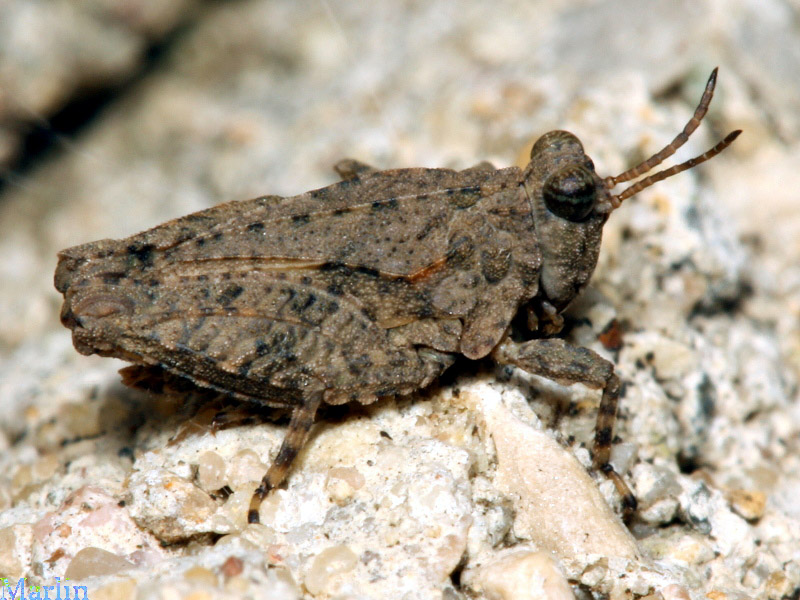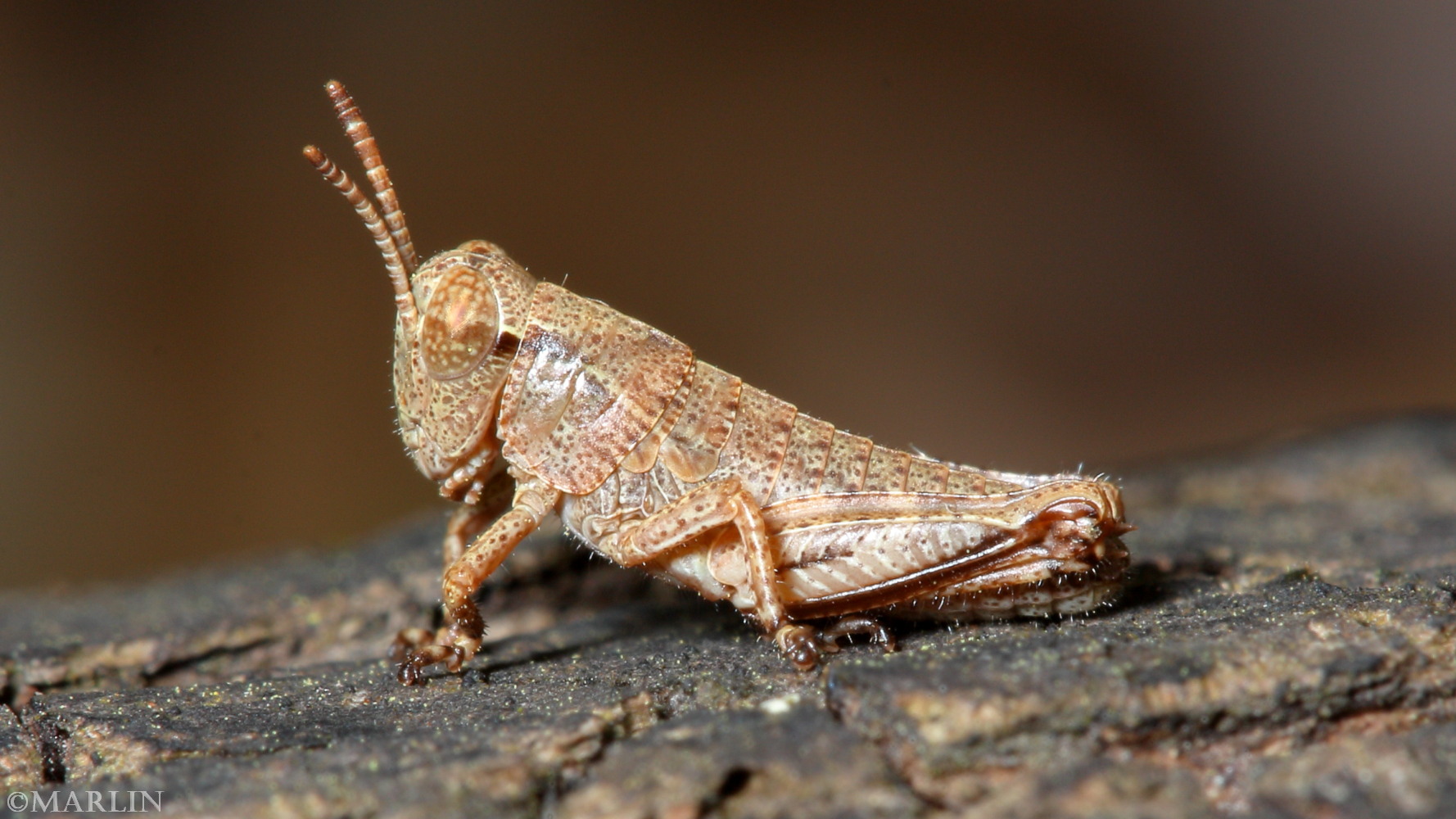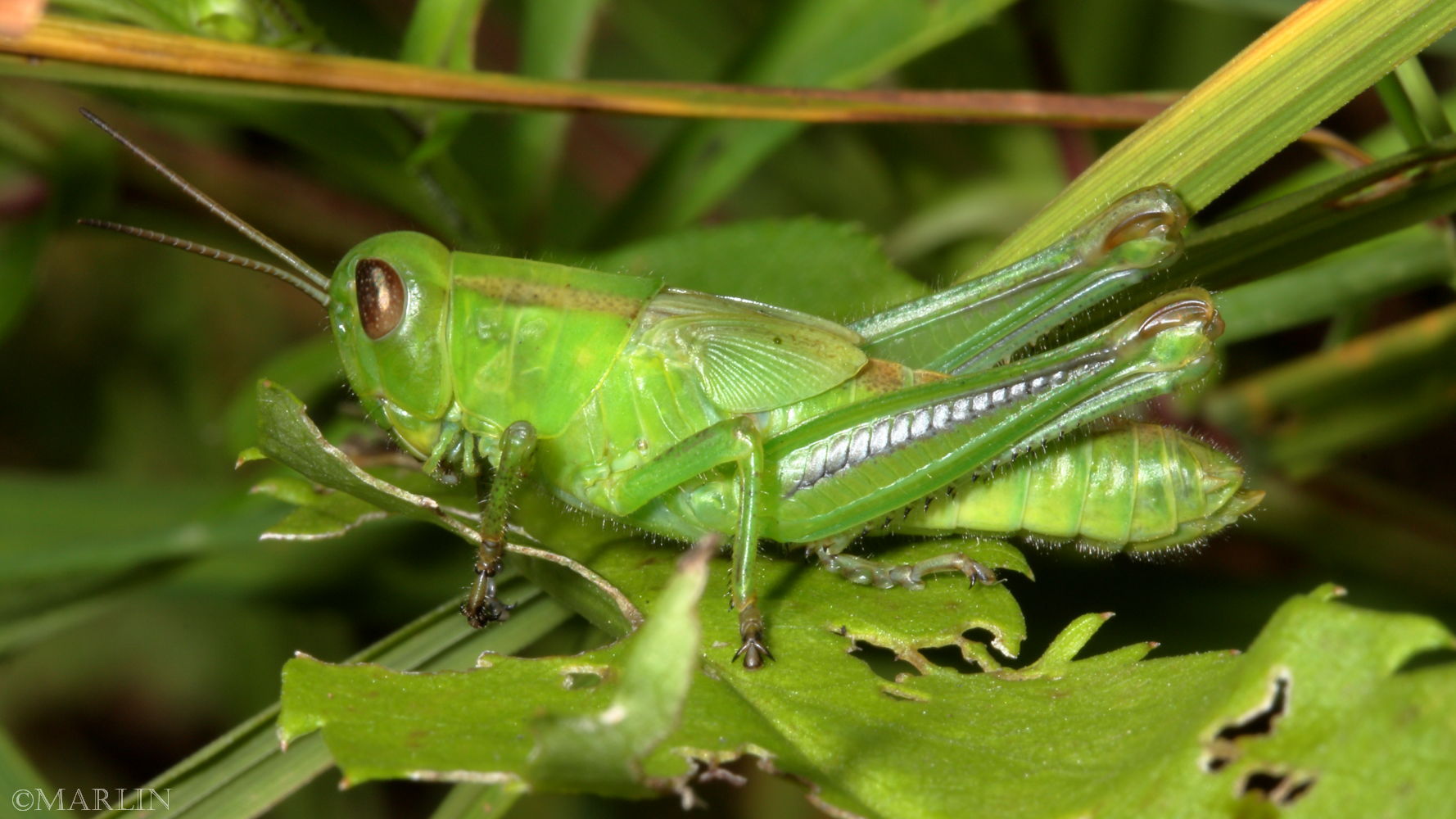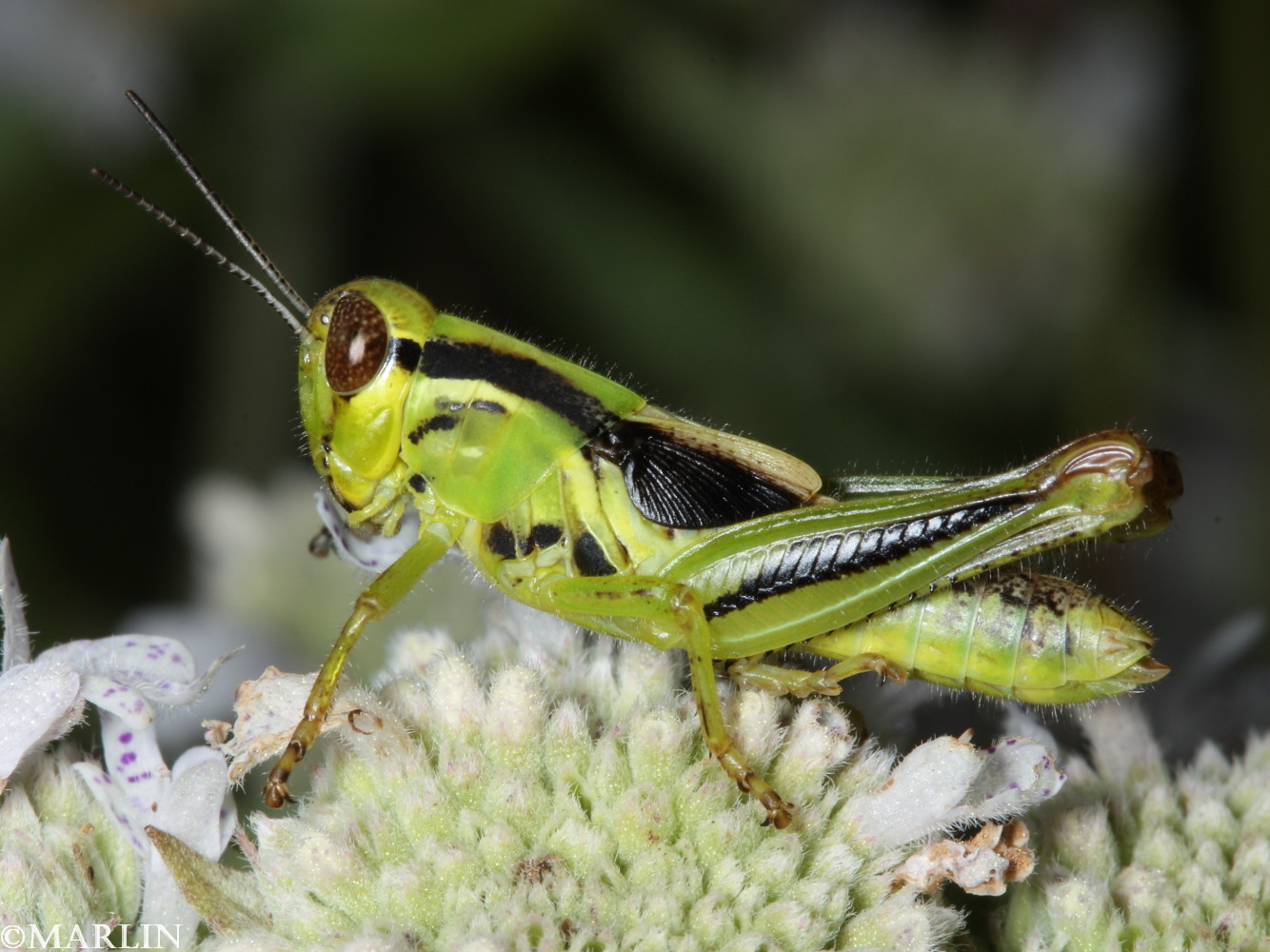Grasshopper Nymphs – Melanoplus genus
Grasshoppers have antennae that are almost always shorter than the body (sometimes filamentous), and short ovipositors. Those species that make easily heard noises usually do so by rubbing the hind femurs against the forewings or abdomen (stridulation), or by snapping the wings in flight. Tympana, if present, are on the sides of the first abdominal segment.
The hind femora are typically long and strong, fitted for leaping. Generally they are winged, with the membranous hind wings used for flight, while the front wings (tegmina) are used as covers for the flying wings, much as beetles use their hardened elytra. Females are normally larger than males, with short ovipositors. Males have a single unpaired plate at the end of the abdomen. Females have two pairs of valves ( triangles) at the end of the abdomen used to dig in sand when egg laying.
Foliage damage evident, another 5th instar nymph shows color variability of these common hoppers. Melanoplus bivittatus
Fifth instar female nymph, about 20mm. Melanoplus bivittatus
 Hooded Grouse Locust Nymph, Paratettix cucullatus
Hooded Grouse Locust Nymph, Paratettix cucullatus
Order Orthoptera – Crickets, Grasshoppers & Katydids
Insects | Spiders




